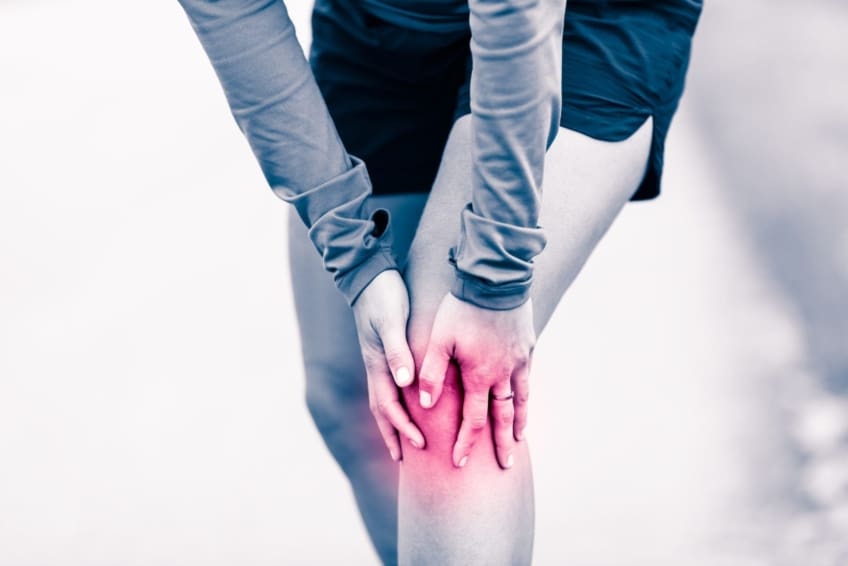
What is patellofemoral pain syndrome?
Patellofemoral pain is a painful knee condition. It’s sometimes called “runner’s knee.” It has to do with the way your kneecap (patella) moves on the groove of your thigh bone (femur). It’s most common in people who participate in high-impact activities that include jumping and running. The syndrome mostly occurs in teens and young adults. It’s also more common in females than males.
Symptoms of patellofemoral pain syndrome
Symptoms include pain under and around your kneecap. The pain can get worse when you’re active. It also can get worse when you sit for a long time. This condition can occur in one or both knees. It can lasts weeks and months.
What causes patellofemoral pain syndrome?
The exact cause of patellofemoral pain isn’t known. However, doctors think it’s related to how your leg is aligned. If your hip and knee muscles don’t support your kneecap the right way, that may cause this pain, too.
How is patellofemoral pain syndrome diagnosed?
Your doctor will ask you questions about your symptoms. They will do a physical exam. This might involve pressing on your knee and moving your leg around. You may need an X-ray, CT scan, or MRI to look at your bones and soft tissue.
Can patellofemoral pain syndrome be prevented or avoided?
The condition can’t be prevented or avoided. However, certain things can reduce pain and discomfort. This includes restricting your activity, using over-the-counter pain medicines when needed, and physical therapy.
Patellofemoral pain syndrome treatment
There are a variety of treatment options that can be combined.
- Wear the right shoes and shoe inserts. Proper shoes can help knee pain. An arch support insert from a shoe store can be helpful. It’s less expensive than a custom-made support or brace.
- Tape your knee or wear a brace. Your doctor can show you how to tape your knee. They also can recommend a brace. If you wear these items, you may be able to start exercising again. But talk with your doctor before beginning any exercise plan.
- Take over-the-counter pain medicines. These include acetaminophen (one brand name: Tylenol), ibuprofen (one brand names: Advil), or naproxen sodium (one brand name: Aleve). Ask your doctor which one is best for you.
- Ice your knee. After you exercise, ice your knee for 10 to 20 minutes. This can ease pain and speed healing.
Surgery may be necessary in some cases. A surgeon will make a tiny incision in your knee. They will insert a thin, flexible tube attached to a camera into the incision. The camera allows them to see the damage inside your knee and make repairs with special instruments. In severe cases, your surgeon can realign the angle of the kneecap.
Living with patellofemoral pain syndrome
Living with patellofemoral can be frustrating. That’s because the pain interferes with activities you enjoy. Focus on relieving your pain, including:
- Take a break from physical activity that causes pounding on your legs. This includes running, volleyball, or basketball. Switch to swimming or another low-impact activity. Nonimpact elliptical trainers are helpful. That’s because these machines support your body weight and put less stress on your knees. Slowly return to your normal sports when your knee feels better.
- Talk to a physical therapist about exercises you can do at home. Your doctor may refer you to a physical therapist. This specially trained therapist can show you how to do exercises to help your knee, build stability, and improve your form while exercising. They will show you how to do the exercises while you’re in their office. You’ll then need to do these exercises at home. The therapist will give you a handout about each exercise to remind you how to do them.
Questions to ask your doctor
- Is this condition permanent or temporary?
- Once the condition goes away, will it come back again?
- It this condition hereditary?
- Does this condition happen in teens more than kids and adults?
- What if medicine upsets my stomach?
![]()
Copyright © American Academy of Family Physicians
This information provides a general overview and may not apply to everyone. Talk to your family doctor to find out if this information applies to you and to get more information on this subject.






